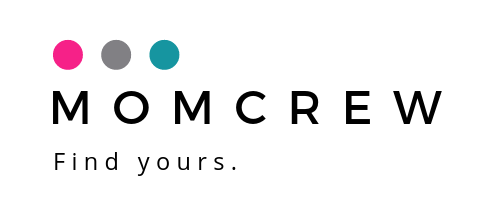3 Ways to Help Your Postpartum Body Regain Strength After Giving Birth
/Mom Crew caught up with Charlotte Blake Kaplan, founder of Charlotte Blake Pilates and an NYC mom herself, about her perspective on recovering after giving birth and regaining core strength in her postpartum body.
I’ve worked with postnatal women for over a decade and no amount of training could have prepared me for what it’s REALLY like to recover and heal after having a baby. I did Pilates my entire pregnancy (41 weeks and 6 days to be exact) and thought I’d be bouncing back at 6 weeks postpartum. I was not. In fact, I learned there was no “bouncing back” to be had.
I felt really weak after giving birth and learned that it takes time for the abdominals to begin working efficiently again. I had to essentially re-train my abdominals and my pelvic floor muscles to get them to engage properly. It wasn’t until 8 months postpartum that I felt physically ready to try a weight lifting + cardio class, and even then I only walked on the treadmill and the heaviest weight I picked up was 5 pounds.
Any timeline placed on a new mom to be fully recovered from giving birth is toxic – and simply doesn’t reflect the reality of what it means to heal after giving birth, whether that birth was vaginal or cesarean. That’s why I don’t prescribe a set of exercises to help new moms to recover, heal and strengthen after giving birth. One exercise that could be helpful for one body could be harmful for another. What I can do is share the top three ways to begin integrating core strength into your new body.
1. Breathing correctly
Next time you’re admiring your babe while they sleep (which, let’s be honest, is when babies are the most adorable), notice how they breathe with their body. You’ll see their cute baby belly expanding on the inhale and naturally deflating (so to speak) on the exhale. Your baby inherently knows how to breathe. They haven’t taken on physical bad habits like most adults have. So let’s take a look at how you are breathing and why it is important.
Breathing correctly is literally how you restore your abdominal muscles and pelvic floor. It’s not a woo-woo idea, it’s anatomically how your abdominals and pelvic floor muscles function properly. Sitting or standing, place one hand on your chest and one hand on your low abdomen region. Take a nice deep inhale through your nose. Notice if your chest expands and not your abdomen. Or notice if your abdomen expands fully yet your chest stays completely still.
If you aren’t expanding your abdomen on the inhale, try this:
Place both hands on your abdomen and encourage your low belly region to let go or expand on the inhale. If you’re used to holding in your abs, letting go the abdomen will take practice.
If you aren’t expanding your chest on the inhale, try this:
Place both hands on the sides of your ribcage. When you inhale, make sure you are inhaling into the side of your ribs, not only expanding in your low abdomen.
2. Practicing abdominal engagement through the breath
Toss out those old ideas of what “strong abs” means, because a functional core is the new black. Not only will a functional core help you achieve the physical results you’re looking for, but it will help you heal a diastasis (abdominal separation common after pregnancy), will help resolve pelvic floor imbalances, and will help your core be the strongest it’s ever been.
Remember, your breath initiates your core. In order to put this core connection into practice, notice if you’re holding your breath throughout your day-to-day life. When you pick up that morning coffee mug, pick up your baby from the crib, or squeeze work in during your baby’s nap, are you holding your breath at all?
If you notice breath-holding, I encourage you to exhale before you move your body. Allow an exhale to occur when you reach for your coffee or go to pick up your baby. Practice deep core breathing when you are working at your computer, and definitely check in with your belly or side-rib breathing when you are walking or pushing the stroller.
3. Integrating abdominal engagement and strength into everyday life as a new mama
I hope you’ve found Postpartum exercises that are helping you (if you haven’t, email me!), but I want to make it super clear that in addition to some sort of body-healing and strengthening routine, it is imperative to begin to incorporate abdominal strength during daily activities so that you stay pain-free.
Sitting or standing, place both hands on your hip bones. Inhale and expand your abdomen like you practiced above. On the exhale, imagine your hip bones are drawing toward one another to wake up the low ab muscles, or Transverse Abdominus. These deep core muscles act as a corset-like muscle that wraps on the exhale. Imagining your hip bones wrapping together on the exhale will begin to wake up this deep core.
Remember, there is no “ideal” timeline for recovery – only YOURS. We can find it together.
Charlotte provides 1:1 Postnatal Pilates Consults and Postnatal Pilates Group Programs via Zoom for mamas who want to take the guess-work out of Postpartum recovery.
The mission of Charlotte Blake Pilates is to help you better understand your body so that you can bring greater alignment, stability, and presence to your self and your life. The power in this work comes from transformation: letting go of what isn’t working and manifesting the fierce, powerful, grounded YOU that you’re fully capable of being. Supported by a team that values compassion, you’ll learn how to confidently move through life guided by the strength and wisdom of your body.


